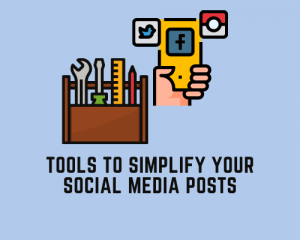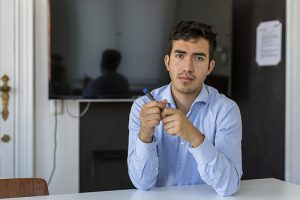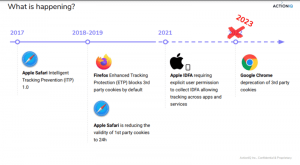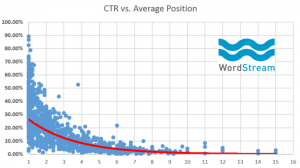23andMe CEO Anne Wojcicki wants to take the struggling company private—then comes the real work
23andMe was going to remake healthcare with its DNA spit tests. Today, it’s languishing on the sidelines. Wojcicki has a long road ahead.
Direct-to-consumer genetic testing pioneer 23andMe unveiled a new product in May. Cofounder and CEO Anne Wojcicki had long promised that 23andMe would democratize genetics and, in the process, unleash a health revolution based on personalized genomic insights. But the company’s newest feature was decidedly more mundane: Through its telehealth service, 23andMe would start writing prescriptions for erectile dysfunction medication.
How the mighty have fallen. Once a leader in delivering genetic information to the masses through its DNA spit kits, 23andMe is now a telehealth also-ran, peddling genetic-based health insights alongside prescription drugs, with a side business mining its databases for drug discovery. Valued at $ 6 billion at its peak in early 2021, the company’s stock has since fallen more than 95% and is trading below $ 1 a share.
Wojcicki, one of 23andMe’s largest shareholders, is now proposing to take the company private by acquiring the outstanding shares she does own for 40 cents each. “As CEO, I remain as committed as ever to our long-term vision of becoming a global leader in genetics and establishing genetics as a mainstay of healthcare ecosystems worldwide,” she wrote in her offer letter, which she submitted to the board this week. “However, the more constrained capital markets and fundraising environment that exist today necessitate that we make a significant change in capital structure to continue to advance this mission.”
She may very well secure financing and win board approval for such a transaction. (Wojcicki declined requests for an interview.) And analysts have speculated that she might even separate the consumer-facing business from the drug-discovery effort. But to return 23andMe to its prior glory, or come even close, she will need to do far more.
23andMe’s consumer business has been stagnant for years. Over time, the cost of the company’s most basic DNA spit test—which delivers an infotainment mix of ancestry, health, and cocktail party fodder—has dropped from $ 1,000 to a fraction of that price. But lower prices have not sparked greater demand. Because DNA is fixed, consumers see little reason to take 23andMe’s test more than once. And given the recent bad press around the company, including a hack that compromised users’ ancestry information last fall, many consumers have concluded they have no reason to take the test at all. In 2019, 23andMe sold $ 425.5 million worth of personal genetics tests; by 2021, that revenue had dropped by more than half. Since then, test revenue has remained roughly flat.
23andMe tried to boost this business by combining genomics insights with telemedicine. In late 2021, it acquired telemedicine startup Lemonaid Health for $ 400 million, and two years later, it unveiled the Total Health subscription service ($ 999 to sign up; $ 499 annually). Subscribers can sequence their exome—the functional, protein-coding part of the genome—and find out their risk of certain cancers, their likelihood of suffering from insomnia, and their propensity for early-bird hours. They also get virtual consultations with clinicians trained in genetics to craft a “personalized health plan.” The fine print for Total Health, as well as the company’s other genetics services: “23andMe reports do not diagnose any health conditions or provide medical advice.”
The problem is that 23andMe sold consumers (and the media) on the idea of DNA being the key to optimizing health. That idea intrigued Wojcicki, who married Google cofounder Sergey Brin in 2007 (they later divorced) and was steeped in the Bay Area’s disrupter mentality. She saw that democratizing access to this kind of information could fundamentally challenge the way healthcare is delivered and help amass the kind of data necessary to speed up the development of cures. But making a profit proved difficult. “’We’re just gonna break everything’—I think that, in general, is not a great path in healthcare,” says Othman Laraki, cofounder and CEO of Color Health, a former genomics competitor that’s now focused on broader healthcare services.

Unfortunately for 23andMe (and other consumer-facing genetics companies), scientists stopped viewing DNA as a straightforward instruction manual years ago. We now understand that genes impact health in surprisingly malleable ways. That nuance is further complicated by the fact that most traits and diseases are tied to multiple genes, as well as to environmental and behavioral factors. In short, extracting medically meaningful information from the genome is, for the most part, a matter of probabilities. “It’s not that there’s not intrinsic value in [genomic] data,” says Dr. Mark Kiel, cofounder and chief science officer of startup Genomenon. “There’s just overinflation of expectations and overinvestment.”
So while 23andMe has dutifully added report after report to its offerings, it still can’t give consumers the clarity that many crave. They come to 23andMe in search of answers, and in return, they get a dizzying array of risk scores. A physician might be able to use those scores to recommend that a patient with a family history of cancer and the related genetic mutations get screened earlier in life. And a pharmaceutical company might be able to query the genomic data underlying those scores to buttress its confidence in a drug target. Such services are valuable. They just aren’t the world-conquering stuff of Silicon Valley greatness.
Ten years ago, Wojcicki appeared on CBS This Morning with a message about the human genome that she had shared many times before: “It’s actually a road map for you to understand what are the things you could potentially do to be as healthy as possible,” she said. “We believe in this world it’s going to be possible for you to be healthy at 100.”
But the road map that 23andMe provided back then was, as researchers might say, “low res.” Its tests scanned for specific single nucleotide polymorphisms (aka snips) known to be associated with disease, like breast cancer, or traits of interest, like unibrows. They ignored the rest of the genome. From a clinician’s perspective, the results were not actionable: Precision diagnostics and personalized therapeutics require the Shakespeare folio edition, not the CliffsNotes. “More is always better in our field of genetics,” says Scott Hebbring, a senior research scientist at the Marshfield Clinic Research Institute.
Indeed, 23andMe operates in a regulatory lane that the FDA created for it as part of a broader agreement after critics accused the company of misrepresenting the health benefits of its spit test. After 23andMe launched its “Know more about your health!” TV ads in 2013, the FDA ordered it to cease marketing the test, writing in a letter that it didn’t have “any assurance” that the company had “analytically or clinically validated the [test] for its intended uses.” Eventually, with the agency’s blessing, 23andMe was granted permission to market its test as a means to assess for certain diseases but not diagnose them.
That hasn’t stopped the company from pushing further into health. The reports that 23andMe delivers have multiplied, from whether a customer has fructose intolerance to their propensity for bipolar disorder. Some address complex conditions like heart disease, with scores for high blood pressure, atrial fibrillation, and coronary artery disease. Customers can access these insights through a Total Health subscription or 23andMe+ Premium ($ 298, plus $ 69 annually), both of which offer exclusive access to the company’s latest research. “We are the only company that the FDA has authorized to provide, without a physician involvement, genetic cancer risk reports and medication insights,” Wojcicki said in a November 2022 earnings call.
In May 2023, she shared with analysts that 23andMe+ Premium had attracted 640,000 subscribers. “Consumers recognize the value of understanding that over one-third of their health risks come from their genetics,” she said. But the true value lies in understanding the remaining two-thirds in concert—those associated with medical history, environment, and behavior. And for that you need a clinician, not just a spit test.

This so-called integrated view of health is revolutionizing medicine. Mapping genomes, for example, has helped cardiologists discover that heart disease is, in fact, a multitude of diseases that lead to the umbrella outcome of heart failure or arrhythmias. Dr. Elizabeth McNally, a cardiologist and geneticist who directs the Center for Genetic Medicine at Northwestern University, says her practice looks to gene panel testing to evaluate patients and family members with cardiomyopathy, enlarged aorta, and more. The genetic testing helps guide clinical care and is leading to new gene-specific treatments.
23andMe has tried to offer its customers a more integrated view by suggesting lifestyle adjustments and, more recently, by combining its spit test with the Lemonaid Health platform and its physicians. But Lemonaid, at its heart, is an on-demand pharmacy. So while demand for genomics-based precision medicine at McNally’s practice is so high that she and her team are booked a year out, sales for 23andMe’s tests are floundering.
Throughout 23andMe’s ups and downs, Wojcicki has returned to what she sees as the company’s prized asset: its genotype data on 15 million customers. 23andMe has made millions of dollars licensing that data to pharmaceutical companies so they can spelunk for insights that might lead to drug discovery and development. In the fall, 23andMe extended its partnership with GSK to the tune of $ 20 million, plus the possibility of future royalties.
Wojcicki sees even more power in connecting genome information to other data sources. “There’s a whole new world coming of additional data sets from Apple Watch and medical records, et cetera,” she said last year. She’s also spoken about the possibilities of using AI to mine DNA for health insights.
But in the 18 years since the company’s debut, the ground has shifted. Early on, 23andMe used customer surveys to collect data on their phenotypes, or observable traits, which gave it a competitive advantage. (Without the ability to match genotype and phenotype, DNA’s code is effectively meaningless.) Today, however, many publicly available biobanks have taken steps to marry their genetic profiles with official medical records. Suddenly, survey data isn’t as valuable.
Michael Malinowski, professor of law at Louisiana State University and author of Personal Genome Medicine: The Legal and Regulatory Transformation of US Medicine, recalls completing a 23andMe survey that included a question about his vision. “Everything is a yes/no answer. Are you nearsighted? Are you farsighted? You can’t say to them, ‘I had LASIK,’?” Malinowski says. “Their intake of health information is so banal that I have no faith in the database that they’re building. They may be going very deep with some people that have specified diseases, but overall, it’s junk. And when you’re dealing with science and you have junk intake of data, it pollutes good data.”
Meanwhile, the cost of whole genome sequencing has dropped dramatically. As a result, more and more companies are focused on building algorithms and software that can tame the whole genome’s unwieldy data, leading to personalized treatments. Startups like MyOme plan to make proprietary algorithms that can be used to generate polygenic risk scores a foundational part of their business. Large data sets also give researchers opportunities to identify medical “unicorns”—people whose medical histories seem to defy the fate of their DNA, pointing to possible treatments.
“Data will be the primary driver of the next wave of healthcare,” says Nessan Bermingham, an operating partner at Khosla Ventures and serial biotech entrepreneur. “There is the ability for companies like 23andMe to basically own that [opportunity],” he adds, “if they build the company properly with that mentality.”

But success compiling a biobank does not guarantee success analyzing it. And unfortunately for 23andMe, its overriding impetus has been to democratize healthcare, not spin up software algorithms.
23andMe isn’t the only casualty in the genomics sector. Its chief rival, Ancestry, has been conducting layoffs amid waning demand. Invitae, once a high-flying genetic testing company, declared bankruptcy in February and sold off its business units. Color, which launched with direct-to-consumer tests similar to 23andMe’s, has reinvented itself multiple times, landing on a model that involves partnering with employers, health plans, and unions to manage cancer for their populations.
The challenge for all the players in this space is the oblique connection between DNA and health. Consumers, doctors, and health insurers prefer to pay for actionable information. The closer a company’s products sit to diagnosis and treatment, says Lindy Fishburne, managing partner at biosciences investor Breakout Ventures, “the higher the likelihood” of it making money. And genome data, by itself, is rarely actionable.
“People want to learn about themselves. They want to be healthier,” Wojcicki said in a 2017 interview with Recode. “They want to know more [about] what they can do.” But self-knowledge typically involves definitives, not probabilities.
As for 23andMe, it might have a future as two separate, private companies, with each side of the business rebuilt to reflect a more modern understanding of genomics. But that feels improbable, and nowhere near definite.
(9)
Report Post





